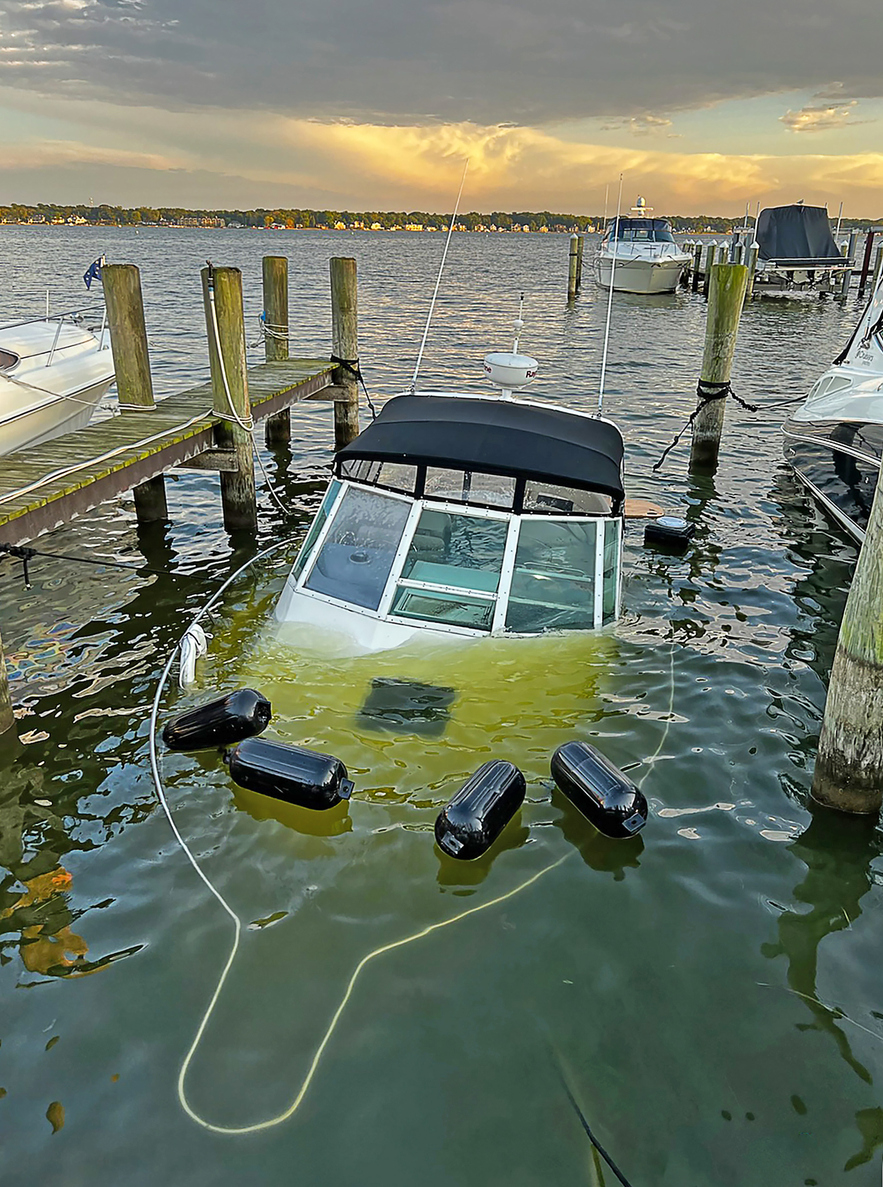Yesterday’s post, Jewelry Insurance and The Missing Wedding Band—Avoiding the Mysterious Disappearance Exclusion, discussed an “all-risk” or “open perils” policy form compared to a named perils contract. Marine insurance is a form of “all risk” coverage, but its coverage analysis often has a significant discussion of “fortuity” as a requirement for coverage to apply.
A federal appellate court1 had a somewhat tongue in cheek introduction to this requirement, stating:
Poems and books get written, songs sung, and movies made about sinking ships. But there’s nothing stirring or awe-inspiring about a yacht that partially sinks in calm waters while docked. That, sadly, is the event at the center of this case. In the insurance dispute that followed, the District Court granted summary judgment in favor of the insurance company because the yacht’s owners, Mr. and Mrs. Inganamort, did not carry their burden of proving that the loss was a matter of chance – ‘fortuitous,’ in the argot of insurance – which is a requirement for coverage under the all-risk insurance policy the Inganamorts had. Because we agree that an insured bears the burden of proving fortuity, and that the Inganamorts did not meet that burden here, we will affirm.
In its analysis, the court noted that the insured has the burden of proving that the loss was “fortuitous:”
[W]hen Three Times a Lady sank, it was covered by an all-risk insurance policy, which protects against fortuitous losses, meaning losses that are unexplainable or ‘dependent on chance.’ Intermetal Mexicana, S.A. v. Ins. Co. of N. Am., 866 F.2d 71, 77 (3d Cir. 1989)…All-risk policies ‘arose for the very purpose of protecting the insured in those cases where difficulties of logical explanation or some mystery surround the (loss of or damage to) property.’ Morrison Grain Co., Inc. v. Utica Mut. Ins. Co., 632 F.2d 424, 430 (5th Cir. 1980)…. But just because an insured need not ‘show the precise cause of loss to demonstrate fortuity[,]’ that does not mean an all-risk policy covers all damage. ‘ ‘All-risk’ is not synonymous with ‘all loss.’ ‘ Despite the Inganamorts’ argument, an insured must do more than prove that there was a loss. To enjoy coverage, the insured must prove that the loss was indeed fortuitous.The First, Second, Fifth, and Eleventh Circuits have all held that, for marine insurance policies, the insured bears the burden of proving that the loss was fortuitous. See Banco Nacional de Nicaragua v. Argonaut Ins. Co., 681 F.2d 1337, 1340 (11th Cir. 1982) (‘The [insured] in a suit under an all-risks insurance policy must show a relevant loss in order to invoke the policy, and proof that the loss occurred within the policy period is part and parcel of that showing of a loss.’); Morrison Grain, 632 F.2d at 429 (‘[T]he burden of proof generally is upon the insured to show that a loss arose from a covered peril.’); Atlantic Lines Ltd. v. American Motorists Ins. Co., 547 F.2d 11, 12 (2d Cir. 1976) (‘[F]or recovery under an all risks policy, an insured need demonstrate only that a fortuitous loss has occurred.’); Boston Ins. Co. v. Dehydrating Process Co., 204 F.2d 441, 443 (1st Cir. 1953) (‘Undoubtedly … the owner of the barge and its cargo has the burden of establishing … that its loss was caused by a risk insured against[.]’). In the non-maritime context, we too have held that an insured with an all-risk policy bears the burden of proving that a loss was fortuitous and therefore covered by the policy. See Intermetal Mexicana, 866 F.2d at 76-77 (describing what the insurer showed to prove the event was fortuitous). We now join our sister circuits in saying that, under a maritime all-risk policy, the insured bears the burden of proving that a loss was fortuitous.
That burden is not heavy, but it is more than negligible (‘[T]he ‘burden of demonstrating fortuity is not a particularly onerous one[.]’ ‘ (quoting Morrison Grain, 632 F.2d at 430)); see also PECO Energy Co. v. Boden, 64 F.3d 852, 858 (3d Cir. 1995) (‘Proving fortuity is not particularly difficult.’). Since the nature of a fortuitous loss is that it may not be easily explained, the insured need not point to an exact cause of the loss. In re Balfour, 85 F.3d 68, 77 (2d Cir. 1996) (‘The insured … need not prove the cause of the loss.’); Morrison Grain, 632 F.2d at 431 (‘[C]ourts which have considered the question have rejected the notion that the insured must show the precise cause of loss to demonstrate fortuity.’). When a vessel sinks in calm waters, for example, an insured may create a presumption of fortuitous loss by establishing that the vessel was seaworthy before sinking. See Ins. Co. of N. Am. v. Lanasa Shrimp Co., 726 F.2d 688, 690 (11th Cir. 1984); Reisman v. New Hampshire Fire Ins. Co., 312 F.2d 17, 20 (5th Cir. 1963); Boston Ins. Co., 204 F.2d at 443. There must, in short, be some showing that the loss occurred by chance.
For boat insurance, the policyholders should generally try to show that the boat was seaworthy and that something outside of normal circumstances caused the boat to sink. They failed to do this:
[T]hey attempted to show fortuity by asserting that the loss was due to heavy rainfall. But Chartis’s statement of undisputed facts notes that there is ‘no data to support [the] theory that [Three Times a Lady] was subject to ‘heavy rains’ on any date.’ Even if we were tempted to look beyond the statement of undisputed facts, the evidence elsewhere in the record does not support the assertion that the loss was due to heavy rainfall. Not even the Inganamorts’ own expert could say with assurance that there was heavy rainfall in the area at the relevant time.8 Finally, while the Inganamorts had initially claimed that the ship was seaworthy prior to September 15th, they made no effort to present renewed evidence of seaworthiness after the loss was backdated to September 5th or 6th; nor did they press this argument before the District Court or on appeal. Because there is nothing in the record to support the argument that the loss was due to heavy rainfall and there is no other indication of fortuity, the Inganamorts did not carry their burden of proving a fortuitous loss.
For those very nerdy coverage geeks similar to me that are interested in this exciting insurance concept of “fortuity,” you may want to read The Fortuity Doctrine: Deconstructing the All-Risk Policy, and The Fortuity Doctrine, Part 2: Deconstructing the All-Risk Policy.
Thought For The Day
If you’re so afraid of failure, you will never succeed. You have to take chances.
—Mario Andretti
1 Chartis Property Cas. Co. v. Inganamort, 953 F.3d 231 (3rd Cir. 2020).





